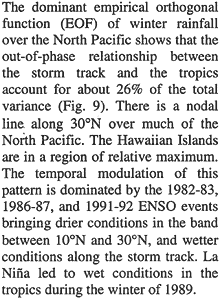Figure 9. First EOF of JFM rainfall anomalies (top) and its time series (bottom), Zero rainfall contour line is indicated.

The second most important EOF accounts for about 17% of the total variance. Here the pattern is less zonal, with elongated regions of maximum variability trending from southwest to northeast. Of particular note is the apparent connection of the maximum in the ENP between 30-45。? with the western tropical Pacific region (Fig. 10). The nodal line on the equatorward side of this region extends from just north of the Hawaiian Islands to the coast of California. The temporal modulation of this EOF is dominated by the decadal variation discussed above. Of particular note is the increase of rainfall in the ENP from 1990 to 1997. Could this be the cause of the freshening of the upper pycnocline that was observed at Station ALOHA?
HYPOTHESES
There are at least two hypotheses which should be considered for their ability to explain the observed thermohaline structure changes at Station ALOHA; both involve modes of subtropical gyre variability that emerge from simplified forms of the equations governing ocean dynamics and thermodynamics (Zhang and Liu, 1998). One is the “subduction mode” and the other is the “wave mode” (also termed “gyre wobble”). They are not mutually exclusive.
The subduction mode involves anomalous subduction rates, anomalous subduction locations or the subduction of anomalous waters. The anomalous subduction conditions project onto the upper pycnocline and are advected by the mean gyre circulation. This mode is potentially relevant to ocean-atmosphere coupling on decadal time scales (Gu and Philander, 1997) if the signal is able to persist and affect sea surface temperature (SST) with some delay in a region where the atmosphere is sensitive to the SST anomaly induced.